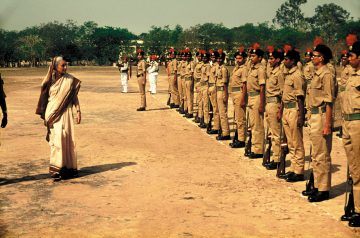
Pankaj Mishra in the New York Review of Books:
Speaking on November 25, 1949, just as India became a democratic republic, B.R. Ambedkar, the chief architect of the Indian constitution, exhorted his countrymen to maintain “democracy not merely in form, but also in fact.” Ambedkar, born in a low, formerly untouchable Hindu caste (Dalits), had ensured a progressive character to the constitution. It promulgated universal adult franchise in an overwhelmingly illiterate population; conferred citizenship without reference to race, caste, religion, or creed; proclaimed secularism in a deeply religious country; and upheld equality in a society marked by entrenched inequalities. The constitution made Indian democracy seem another milestone on humankind’s journey to freedom and dignity.
Ambedkar, however—as Gyan Prakash writes in Emergency Chronicles, his acute analysis of the sudden collapse of democracy in India in the mid-1970s—was “convinced that Indian society lacked democratic values.” India’s new ruling elite “had not broken from the hold of the privileged landed classes and upper castes.” Inheriting power from the country’s departing British rulers in 1947, they presided over a “passive” revolution from above rather than a radical socioeconomic transformation from below. This is why Ambedkar felt that in a society riven by caste and class, where neither equality nor fraternity was established as a principle, “political democracy” urgently needed to be supplemented by broad social transformations—the end, for instance, of cruel discrimination against low-caste Hindus.
More here.
